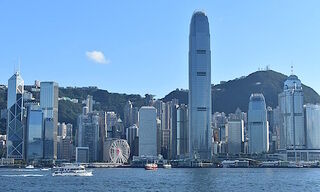Hong Kong CBD Ranking Drops
Hong Kong slipped in the rankings for the most attractive global business district, according to a report by Ernst & Young and think tank Urban Land Institute.
Hong Kong’s Central fell from 11th in 2017 to 13th this year despite being home to the most expensive office spaces, surpassed by the business districts of Seoul, San Francisco and Toronto which all did not make the top ranks in the last report.
The rankings were based on scores from the EY-ULI Index which ranked the 21 top global business districts based on factors such as talent, urban environment and market accessibility. Despite Hong Kong’s drop in rankings, its score climbed from 36.6 to 40.4.
Singapore’s Downtown Core stayed flat slipping one rank from 10th to ninth while its score stayed flat (45.7 to 45.6).
Top 6: Same Old
The City of London retained the throne on the index despite a lower score (58.9 compared to 61.5 in 2017) fuelled by political concerns. According to the report, high concentration of service, financial and university activities contributed to its status as the leading global business district.
The five rankings after were also left unchanged since 2017 with New York’s Midtown as the runner up followed by Tokyo’s Marunouchi, Paris’ La Défense, London’s Canary Wharf and the New York financial district.
«New Normal»
In a foreword by EY partner Marc Lhermitte and ULI Europe CEO Lisette Van Doorn, the «new normal» was underlined a transformational development in business districts that will grapple with the post-coronavirus world. In addition to greater focus on health and wellbeing such as sanitary precautions, there will be immediate pressure to cut costs, rapid adoption of technology and impact to real estate due to work-from-home culture.
«While still too early to draw conclusions on potential long-term impact of the crisis, it is becoming clear that cities and districts more specifically will be impacted in various ways, for example related to health, quality of life and safety,» the report said.
«In areas characterized by high population density and high degrees of social interaction, the impact is likely is likely to be more and long-lasting.»






















